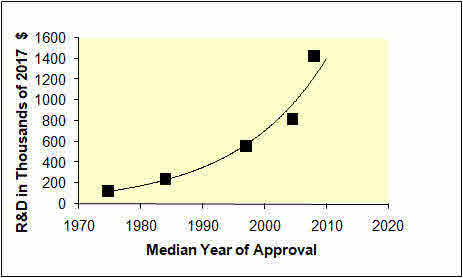This week, Novartis announced that it would be ending its research program designed to discover new antibiotics. The announcement was greeted with great concern, as “superbugs” resistant to our current arsenal of antibiotics, are a growing threat.
In the early 1900s, infection was the primary cause of death. After improvements in sanitation, nutrition, and the introduction of antibiotics, fatalities plummeted. Cardiovascular disease, cancer, and stroke became the top three killers and remain so today. Without new antibiotics in the pipeline, “superbugs” may become difficult to stop and infection may become as deadly as it once was.
What is driving companies to abandon research in these much needed drugs? The answer is simple: as the FDA demands more involved regulatory studies, pharmaceuticals meant to treat disease for a short period of time can’t recover their out-of-pocket development costs, as shown in the Figure below. If a company can’t recover its development costs, and continues to lose money by developing a certain class of drugs, it will go out of business. Antibiotics are especially vulnerable because new ones are used sparingly and usually only in desperate cases in order to prevent further resistance in the “superbugs.”

The data points shown in the Figure above come from several studies by Tufts University. They indicate that increased complexity of clinical trials designed to show effectiveness, as well as the number of patients needed to complete them, are at fault. If these increased costs gave us safer and more effective drugs, we might be willing to pay these extra costs, but studies show no improvements in either of these measures. For example, about 3.3% of FDA-approved drugs are withdrawn after serious side effects are seen; this rate of withdrawal has been constant since the 1970s. The best way to stimulate research in antibiotics and other life-saving drugs is to lower the development costs by getting rid of the excess regulation that drives up development cost without compensating benefits.
Figure and statistics taken from my new book, Death by Regulation: How We Were Robbed of a Golden Age of Health and How We Can Reclaim It.







